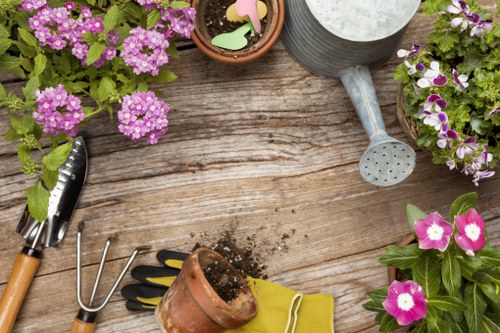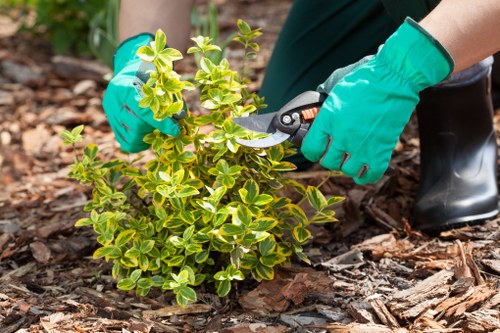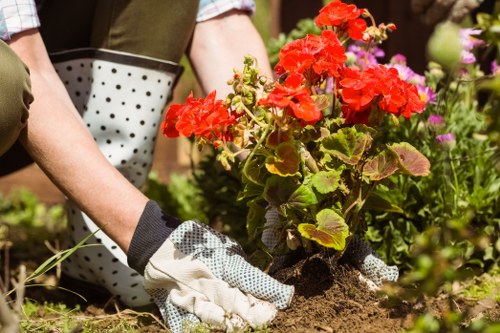Upholstery Cleaner in Spot Cleaner: The Ultimate Solution for Pristine Furniture
Introduction to Upholstery Cleaning

Maintaining the cleanliness and longevity of your furniture is essential for both aesthetic appeal and hygiene. Upholstery cleaners play a pivotal role in keeping your sofas, chairs, and other upholstered items free from stains, dirt, and allergens. Among the various options available, spot cleaners stand out as an effective tool for tackling specific problem areas.
In this comprehensive guide, we will delve into the world of upholstery cleaners, specifically focusing on spot cleaners. Whether you're dealing with a recent spill or an old stain, understanding how to use these cleaners effectively can save you time, money, and the hassle of professional cleaning services.
Read on to discover the benefits, techniques, and tips for using upholstery spot cleaners to maintain your furniture's pristine condition.
Why Choose a Spot Cleaner for Upholstery?

Spot cleaners are specialized tools designed to target and eliminate specific stains and spots on upholstered surfaces. Unlike general cleaning methods that address the entire fabric, spot cleaners focus on localized areas, making them a convenient option for quick and efficient cleaning.
One of the main advantages of using an upholstery spot cleaner is its precision. Whether it's a spilled glass of wine, pet accidents, or food stains, spot cleaners allow you to treat the affected area directly without the need for extensive cleaning. This not only preserves the fabric but also ensures that the cleaning solution is concentrated where it's needed most.
Additionally, spot cleaners are often user-friendly and require minimal setup, making them accessible for homeowners who prefer DIY cleaning solutions. Their portability and ease of use make them an essential addition to your home cleaning arsenal.
Types of Upholstery Spot Cleaners

There are several types of upholstery spot cleaners available in the market, each catering to different cleaning needs and preferences. Understanding the various options can help you choose the right tool for your specific requirements.
1. Spray-Based Spot Cleaners
Spray-based spot cleaners are among the most common types. They typically come in aerosol cans or pump bottles, allowing for easy application directly onto the stain. These cleaners often contain a combination of cleaning agents and solvents that break down the stain for easier removal.
2. Foam Spot Cleaners
Foam spot cleaners dispense a foam that clings to the fabric, providing more extended contact time with the stain. This can enhance the cleaning efficacy, especially for tougher or deeper stains. Foam cleaners are also less likely to oversaturate the fabric, reducing the risk of water damage.
3. Liquid Spot Cleaners
Liquid spot cleaners are versatile and can be used on a variety of fabrics. They usually require application with a cloth or sponge, allowing for controlled and targeted cleaning. Liquid cleansers are effective for dissolving oils, grease, and other stubborn stains.
How to Use an Upholstery Spot Cleaner

Using an upholstery spot cleaner effectively requires following a systematic approach to ensure the best results without damaging the fabric. Here's a step-by-step guide to help you navigate the cleaning process:
- Identify the Fabric Type: Before applying any cleaner, determine the type of fabric you're dealing with. Different fabrics may require specific cleaning agents to prevent damage.
- Test the Cleaner: Always perform a spot test in an inconspicuous area to ensure the cleaner doesn't discolor or damage the fabric.
- Blot the Stain: Use a clean cloth or paper towel to blot the stain gently, absorbing as much of the spill as possible without rubbing.
- Apply the Spot Cleaner: Spray or apply the cleaner directly onto the stained area, following the product's instructions.
- Let It Sit: Allow the cleaner to penetrate the stain for the recommended time to maximize its effectiveness.
- Blot Again: After the cleaning agent has acted, blot the area again to remove excess moisture and residue.
- Allow to Dry: Let the upholstery dry completely before using the furniture to prevent any new stains from forming.
Effective Techniques for Spot Cleaning Upholstery

Mastering the right techniques can significantly enhance the effectiveness of your upholstery spot cleaning efforts. Here are some proven methods to ensure optimal results:
1. Blotting vs. Rubbing
When dealing with stains, it's crucial to blot rather than rub. Rubbing can spread the stain and push it deeper into the fabric fibers, making it harder to remove. Use a clean, absorbent cloth to gently press down on the stain, lifting the substance without causing further damage.
2. Using the Right Amount of Cleaner
Applying too much cleaner can oversaturate the fabric, leading to potential water damage or mold growth. Use just enough product to cover the stain, ensuring that you can effectively lift the portion without excessive moisture.
3. Repeating the Process
Tough stains may require multiple treatments. Allow the area to dry between applications and assess the stain's visibility before deciding if another round of cleaning is necessary.
4. Drying Properly
Ensure that the cleaned area dries completely to prevent any residual moisture from attracting new dirt or causing fabric degradation. Use a fan or open windows to expedite the drying process if needed.
Choosing the Right Upholstery Spot Cleaner

Selecting the appropriate spot cleaner involves considering the type of stains you frequently encounter, your upholstery fabric, and any specific cleaning needs. Here are some factors to help you make an informed decision:
- Type of Stains: Different cleaners are formulated to tackle specific types of stains, such as oil-based, water-based, or protein-based stains. Identify the common stains you deal with to choose a cleaner that addresses those effectively.
- Fabric Compatibility: Ensure that the spot cleaner is suitable for the fabric type you intend to clean. Some cleaners may be too harsh for delicate fabrics like silk or wool.
- Ease of Use: Consider whether you prefer a spray, foam, or liquid cleaner based on your comfort and the cleaning scenario.
- Environmental Considerations: If eco-friendliness is important to you, look for cleaners that use natural or biodegradable ingredients.
- Brand Reputation: Opt for reputable brands known for producing effective and safe cleaning products.
DIY Upholstery Spot Cleaning Solutions

If you prefer homemade cleaning solutions, there are several effective DIY recipes that can rival store-bought products. These solutions are typically safe, cost-effective, and easy to prepare using common household ingredients.
- Vinegar and Water Solution: Mix equal parts of white vinegar and water in a spray bottle. Spray the mixture onto the stain, let it sit for a few minutes, then blot with a clean cloth.
- Baking Soda Paste: Combine baking soda with a small amount of water to form a paste. Apply the paste to the stain, allow it to dry, and then brush it off.
- Dish Soap and Hydrogen Peroxide: Mix a teaspoon of liquid dish soap with a tablespoon of hydrogen peroxide. Apply to the stain, scrub gently, and rinse with cold water.
- Club Soda: Pour a small amount of club soda directly onto the stain, blotting immediately to lift the stain from the fabric.
These DIY solutions can be effective for various types of stains and are a great option for those who prefer natural cleaning methods.
Preventive Measures to Keep Upholstery Clean

While spot cleaning is essential for dealing with accidents, taking preventive measures can significantly reduce the frequency and severity of stains on your upholstery. Here are some strategies to keep your furniture looking its best:
- Use Protective Covers: Invest in slipcovers or upholstery protectors that can shield your furniture from spills, stains, and wear. These covers are often easier to clean and replace than the furniture itself.
- Regular Vacuuming: Keep your upholstery free from dust, dirt, and debris by vacuuming regularly. Use attachments to reach into crevices and seams where particles can accumulate.
- Immediate Spill Response: Address spills and stains as soon as they occur. The quicker you act, the easier it will be to remove the stain without it setting into the fabric.
- Limit Exposure to Sunlight: Prolonged exposure to direct sunlight can fade and weaken upholstery fibers. Use curtains or blinds to protect your furniture from harsh UV rays.
- Train Pets: If you have pets, ensure they are trained to avoid jumping on and soiling your furniture. Consider providing pet-friendly alternatives like designated beds or mats.
Benefits of Professional Upholstery Spot Cleaning

While DIY spot cleaning is effective for many stains, professional upholstery spot cleaning services offer several advantages that can preserve the integrity and appearance of your furniture.
- Expertise and Experience: Professional cleaners have the knowledge and experience to handle a wide range of stains and fabric types, ensuring that the cleaning process is both effective and safe.
- Advanced Equipment: Professionals use specialized equipment and cleaning agents that are not typically available to consumers, allowing for deeper and more thorough cleaning.
- Time-Saving: Hiring a professional can save you time and effort, especially for large or stubborn stains that require extensive attention.
- Long-Term Preservation: Regular professional cleaning can extend the life of your upholstery, maintaining its appearance and preventing deterioration over time.
- Health Benefits: Removing allergens, dust mites, and bacteria from your upholstery can improve indoor air quality and reduce the risk of allergies or respiratory issues.
Choosing the Right Professional Upholstery Cleaner

Selecting a reputable professional upholstery cleaner ensures that your furniture receives the best care possible. Consider the following factors when making your choice:
- Certifications and Training: Look for cleaners who are certified by professional organizations, indicating their commitment to industry standards and best practices.
- Customer Reviews: Check online reviews and testimonials to gauge the satisfaction levels of previous clients and the quality of service provided.
- Services Offered: Ensure that the cleaner offers the specific services you need, such as spot cleaning, deep cleaning, stain removal, and fabric protection.
- Pricing: Compare pricing structures to find a service that fits your budget without compromising on quality.
- Guarantees and Insurance: Opt for companies that offer satisfaction guarantees and are insured, providing peace of mind in case of any accidental damage.
Environmental Impact of Upholstery Cleaners

In today's eco-conscious world, the environmental impact of cleaning products is a significant consideration. Many traditional upholstery cleaners contain harsh chemicals that can be harmful to both the environment and human health.
- Biodegradable Formulas: Choosing cleaners with biodegradable ingredients reduces the environmental footprint, as these substances break down naturally without contaminating water sources.
- Low-VOC Products: Low volatile organic compounds (VOCs) minimize air pollution and reduce the risk of respiratory issues for household members.
- Eco-Friendly Packaging: Opt for products that use recyclable or reusable packaging to further minimize environmental impact.
- Non-Toxic Ingredients: Cleaners made from non-toxic ingredients are safer for use around children and pets, ensuring a healthier home environment.
By selecting environmentally friendly upholstery spot cleaners, you contribute to sustainability while effectively maintaining your furniture.
Common Upholstery Stains and How to Tackle Them

Different types of stains require specific treatments to ensure effective removal. Here are some common upholstery stains and the best methods to address them:
1. Wine Stains
Wine stains are notorious for their stubbornness. To tackle them:
- Blot the spill immediately with a clean cloth.
- Apply a mixture of white vinegar and dish soap to the stain.
- Blot until the stain lifts, then rinse with cold water.
- Allow the area to dry completely.
2. Pet Urine
Pet urine can leave both visible stains and lingering odors. Here's how to handle it:
- Blot the area to remove as much liquid as possible.
- Apply an enzymatic cleaner designed to break down urine proteins.
- Let the cleaner sit for the recommended time.
- Blot again and let the upholstery dry.
3. Grease and Oil
Grease and oil stains can penetrate deeply into fabric fibers. To remove them:
- Sprinkle baking soda or cornstarch on the stain to absorb excess oil.
- Let it sit for 15-20 minutes, then brush it off.
- Apply a liquid dish soap solution and gently scrub.
- Rinse with a clean, damp cloth and let dry.
4. Ink Stains
Ink stains can be challenging but manageable with the right approach:
- Place a paper towel under the stained area.
- Apply rubbing alcohol to a cotton ball and dab the ink stain.
- Blot continuously until the ink transfers to the paper towel.
- Rinse with cold water and let dry.
5. Food and Beverage Spills
Immediate action is key for food and beverage spills:
- Blot the spill to remove excess liquid.
- Apply a mild detergent solution and gently scrub.
- Rinse with cold water to remove soap residue.
- Blot dry and let the area air dry.
Maintaining Upholstery Post-Cleaning

After spot cleaning your upholstery, certain maintenance practices can help preserve its appearance and cleanliness for longer periods. Here are some tips to maintain your furniture post-cleaning:
- Airtight Storage: If you have removable cushions, consider storing them in airtight bags when not in use to prevent dust accumulation.
- Regular Brushing: Gently brush your upholstery to remove surface dust and prevent it from settling into the fabric fibers.
- Avoid Direct Heat: Keep furniture away from radiators, fireplaces, and direct sunlight to prevent fabric fading and weakening.
- Rotate Cushions: Regularly rotating and flipping cushions can ensure even wear and prolong their lifespan.
- Immediate Spill Management: Even after spot cleaning, staying vigilant about spills can prevent stains from forming again.
Implementing these maintenance strategies ensures that your upholstery remains in top condition, reducing the need for frequent deep cleaning.
Tools and Accessories for Effective Spot Cleaning

To enhance your upholstery spot cleaning efforts, having the right tools and accessories at your disposal is essential. Here are some must-have items:
- Microfiber Cloths: These lint-free cloths are perfect for blotting stains without leaving residue or damaging the fabric.
- Soft-Bristled Brushes: Ideal for gently scrubbing stains without aggravating the upholstery fibers.
- Squeegees: Useful for lifting excess moisture and ensuring the area dries quickly and evenly.
- Spray Bottles: Essential for applying homemade or store-bought cleaning solutions uniformly across the stain.
- Vacuum Cleaner with Upholstery Attachments: Helps in removing dust and debris before and after spot cleaning.
Common Mistakes to Avoid When Using Spot Cleaners

Even with the best intentions, certain mistakes can hinder the effectiveness of upholstery spot cleaning. Being aware of these common errors can help you achieve better results:
- Not Testing the Cleaner: Always perform a spot test on a hidden area to ensure the cleaner doesn't harm or discolor the fabric.
- Using Excessive Cleaner: Overapplying cleaning solutions can oversaturate the fabric, leading to water stains or mold growth.
- Rubbing Instead of Blotting: Rubbing can spread the stain and embed it deeper into the fibers, making it more challenging to remove.
- Ignoring Fabric Care Labels: Disregarding the manufacturer's cleaning instructions can result in irreversible damage to your upholstery.
- Delayed Cleaning: Allowing stains to set before treating them reduces the chances of complete removal.
Advanced Techniques for Tough Stains

For particularly stubborn or old stains, advanced cleaning techniques may be necessary to restore your upholstery's original beauty. Here are some methods to consider:
1. Steam Cleaning
Steam cleaning utilizes high-temperature steam to penetrate deep into fabric fibers, breaking down stains and killing bacteria. It's effective for both stains and general deep cleaning, providing a thorough refresh for your upholstery.
2. Dry Cleaning Solvents
Dry cleaning solvents are specially formulated to remove tough stains without the need for water. These solvents can dissolve grease, oil, and other persistent substances, making them ideal for challenging stains.
3. Enzyme Cleaners
Enzyme-based cleaners contain biological agents that break down organic stains like food, pet urine, and bodily fluids. They are particularly effective for biological stains that have hardened over time.
4. Professional Treatment
For extensive or deeply ingrained stains, seeking professional cleaning services is advisable. Professionals have access to advanced techniques and equipment that can handle the most challenging stains without damaging the fabric.
Cost-Effective Tips for Upholstery Spot Cleaning

Maintaining clean upholstery doesn't have to be expensive. Here are some cost-effective tips to help you manage spot cleaning without breaking the bank:
- Use Homemade Cleaners: As mentioned earlier, DIY solutions using household ingredients like vinegar, baking soda, and dish soap can be as effective as commercial products.
- Preventative Measures: Investing in protectors and regular maintenance can reduce the need for frequent deep cleaning, saving you money in the long run.
- Buy in Bulk: Purchasing cleaning supplies in bulk can reduce per-unit costs, making your cleaning routine more economical.
- Reuse and Recycle: Utilize reusable cleaning cloths instead of disposable wipes to cut down on ongoing expenses.
- Compare Products: Shop around and compare different products to find the best deals without compromising on quality.
Implementing these strategies can help you maintain your upholstery's cleanliness affordably and efficiently.
Health Benefits of Clean Upholstery

Clean upholstery contributes to a healthier living environment by reducing the presence of allergens, dust mites, and bacteria. Here's how maintaining clean furniture can positively impact your health:
- Allergen Reduction: Regular cleaning removes common allergens like pollen, pet dander, and dust mites, alleviating allergy symptoms.
- Improved Air Quality: Clean fabric surfaces prevent the accumulation of airborne pollutants, enhancing overall indoor air quality.
- Reduced Bacterial Growth: Spot cleaning eliminates bacteria and pathogens that can thrive in fabric fibers, lowering the risk of illness.
- Minimized Mold and Mildew: Proper cleaning and drying prevent the growth of mold and mildew, which can cause respiratory issues and unpleasant odors.
- Enhanced Mental Well-being: A clean and well-maintained living space can improve mental health by creating a more comfortable and visually appealing environment.
Upholstery Cleaning vs. Replacement

Deciding whether to clean or replace your upholstery depends on several factors, including the extent of the damage, the material's condition, and your budget. Here's a comparison to help you decide:
- Cost: Cleaning is generally more cost-effective than replacing furniture, especially for high-quality or expensive pieces.
- Environmental Impact: Opting to clean rather than replace reduces waste and the demand for new resources, making it a more sustainable choice.
- Restoration Potential: Many stains and damages can be effectively remedied through professional cleaning, restoring the furniture's original appearance.
- Sentimental Value: If the furniture holds sentimental value, cleaning is a preferable option to preserve cherished items.
- Extent of Damage: Severe damages or structural issues may necessitate replacement, but minor to moderate stains and wear can often be addressed through cleaning.
Assessing these factors will help you make an informed decision that balances practicality, cost, and environmental considerations.
Final Thoughts on Upholstery Spot Cleaners

Upholstery spot cleaners are invaluable tools for maintaining the beauty and longevity of your furniture. By understanding the different types available, mastering effective cleaning techniques, and implementing preventive measures, you can ensure that your upholstered pieces remain in pristine condition for years to come.
Whether you choose DIY solutions or seek professional services, the key to successful upholstery maintenance lies in prompt action, the right tools, and consistent care. Embrace these practices to enjoy a clean, healthy, and aesthetically pleasing living space.
Contact us today to learn more about our expert upholstery cleaning services and keep your furniture looking its best!